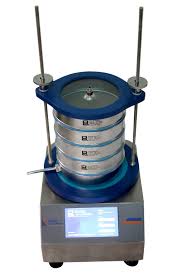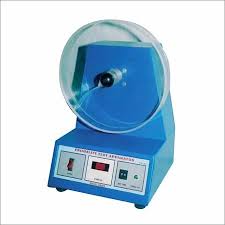|
Getting your Trinity Audio player ready... |
Evaluation For Stability Data Q1e
General Principles of Stability Study Design
Stability Data Q1e: The design and execution of formal stability studies must adhere to the principles outlined in the parent guideline. These studies aim to establish the appropriate retest period or shelf life for a drug substance or product. This is determined by testing a minimum of three batches, with the results used to propose shelf-life durations and storage conditions for future batches manufactured under similar conditions. The purpose of such stability testing is to predict how the product will maintain its quality and performance throughout its designated shelf life, ensuring that it remains within acceptable limits for potency, purity, and other quality attributes.
The degree of variability among different batches of the drug product can affect how accurately we predict the stability of future batches. When assessing stability, it is important to acknowledge that minor variations in manufacturing and analytical procedures are normal. However, these should not compromise the drug’s formulation, which must be designed to provide 100% of the labeled amount of the active pharmaceutical ingredient (API) at the time of batch release.
If the assay values of the test batches exceed 100% of the label claim at the time of release, the proposed shelf life in the registration application could be overestimated. On the other hand, if the assay value is below the label claim at release, there is a risk that the product may fall below the minimum acceptance criterion before the end of its proposed shelf life. Therefore, the variability in the stability data of each batch must be carefully evaluated to ensure that the proposed shelf life remains within safe and acceptable limits.
Evaluation of Stability Data: Stability Data Q1e
A methodical approach should be employed to present and evaluate the stability data obtained from the studies. This data should include information from physical, chemical, biological, and microbiological tests, taking into account specific attributes of the dosage form (such as dissolution rate for solid oral dosage forms). When reviewing the stability data, it is essential to assess whether the mass balance is appropriate and to consider potential causes of discrepancies, including degradation mechanisms and the inherent variability of the analytical procedures used.
The basic concepts of stability data evaluation remain consistent across different types of studies—whether single- or multifactor studies, or full- or reduced-design studies. The goal is to identify the critical quality attributes that could impact the quality and performance of the drug substance or product. Each attribute should be assessed individually, and then a comprehensive evaluation should be made to propose a suitable retest period or shelf life. It is important to remember that the proposed shelf life should not exceed the predicted stability of any individual attribute.
A stepwise decision-making process, which can be found in Appendix A, outlines when and how much extrapolation can be applied to determine a retest period or shelf life based on available stability data. Additionally, Appendix B provides more detailed guidance on evaluating long-term data for quantitative test attributes. This section includes methods for performing regression analysis to estimate shelf life and examples of statistical procedures to determine the poolability of data from different batches or test conditions. While the examples in Appendix B are helpful, they do not cover every statistical method applicable to stability data evaluation.
In many cases, quantitative chemical attributes of the drug product, such as the assay, degradation products, or preservative content, can be expected to follow zero-order kinetics during long-term storage. As such, they are well-suited to statistical analysis methods like linear regression and poolability testing. However, the kinetics of other quantitative attributes, such as pH or dissolution rate, are generally not as predictable, though they can still be evaluated using the same statistical methods, if applicable. Qualitative attributes and microbiological data, however, do not lend themselves to the same types of statistical analysis.
The use of statistical analysis in stability studies is not mandatory but can be particularly useful in verifying or supporting the proposed shelf life or retest period. The decision to employ statistical methods should be based on the specific circumstances of each study and the nature of the data being analyzed.
Data Presentation
When presenting stability data, it is crucial that the results for all attributes are shown in a clear and appropriate format. This could include tabular representations, graphical displays, or narrative summaries. Quantitative data should be presented as measured values, such as assay results expressed as a percentage of the label claim. If statistical analysis is conducted, the specific procedures used and the assumptions made should be clearly outlined and justified. It is also essential to include a summary of the statistical outcomes, either in table form or through graphical presentations, especially when long-term data is involved.
Extrapolation of Stability Data
Extrapolation involves using existing stability data to predict the behavior of a product beyond the time period covered by the available data. This practice is often used to extend the proposed shelf life or retest period. Extrapolation may be proposed if no significant changes are observed under accelerated conditions during testing. The appropriateness of extrapolation depends on the extent of understanding regarding the change pattern, the fit of any mathematical models used, and the availability of supporting data. It is essential that any extrapolation be performed cautiously to ensure that the extended retest period or shelf life is valid for future batches, particularly those with test results close to the established acceptance criteria.
When extrapolating stability data, it is assumed that the patterns of change observed during the long-term study will continue beyond the period of observation. The accuracy of this assumption is crucial. Statistical methods can be used to test the goodness of fit for the regression line or curve used to model the data. However, once the data extends beyond the period covered by the long-term studies, it is not possible to verify the assumptions, making additional long-term stability data necessary to confirm the accuracy of the extrapolated shelf life.
Evaluation for Room Temperature Storage
For drug substances or products intended for room temperature storage, stability data should be evaluated systematically. This process begins with any significant changes observed under accelerated conditions and proceeds to an analysis of the long-term data. If no significant changes are observed at accelerated conditions, it may be appropriate to propose a shelf life or retest period based on the long-term data. Extrapolation beyond the time period covered by long-term data can be considered in such cases, although the proposed shelf life should not exceed double the period covered by the long-term data. Careful attention must be paid to the variability in the data, and statistical analysis may be used to support the proposal.
If significant changes are observed at the accelerated condition, the proposed shelf life will depend on the outcomes of the intermediate and long-term stability testing. Statistical analysis can be useful in evaluating the variability in the data and in determining the most appropriate retest period or shelf life.
Evaluation for Storage Below Room Temperature
Stability studies for drug substances or products intended for storage at temperatures lower than room temperature should be evaluated in a similar manner to those for room temperature storage, with additional considerations based on the temperature and storage conditions involved. Specifically:
- Storage in a Refrigerator: When a drug product is intended for refrigeration, extrapolation of the shelf life or retest period beyond the period covered by long-term data can be proposed. However, the extent of extrapolation should be more limited than for room temperature storage. If no significant changes are observed at accelerated conditions, the proposed shelf life should be extended by no more than 6 months beyond the long-term data. If changes are observed, the extrapolation should be kept to 3 months or less beyond the period covered by long-term data.
- Storage in a Freezer: For products intended to be stored in a freezer, no accelerated storage conditions may exist. In this case, it is essential to base the proposed retest period or shelf life on long-term data. If accelerated testing is necessary, it should be conducted at elevated temperatures to assess the effects of short-term excursions outside the label storage conditions, such as during shipping or handling.
Statistical Approaches in Stability Data Analysis
Appropriate statistical methods should be applied to the primary stability data to estimate the retest period or shelf life with a high degree of confidence. The purpose of statistical analysis is to ensure that the drug substance or product will remain within acceptance criteria during its shelf life for all future batches produced under similar conditions.
One of the most commonly used statistical methods for evaluating stability data is regression analysis. The relationship between the drug’s quality attributes and time will guide the selection of the appropriate regression model. This could involve linear regression or non-linear regression, depending on the nature of the data. In some cases, logarithmic transformations may be applied to the data to facilitate a more accurate regression model.
When determining the shelf life, the goal is to find the time at which the confidence limit for a given attribute intersects with the acceptance criterion. This could involve calculating one-sided confidence limits for attributes known to either increase or decrease over time. If the direction of change is uncertain, two-sided confidence limits should be used.
Statistical analysis is especially useful when data from multiple batches or factors are combined. Statistical methods help determine the poolability of data, ensuring that the resulting retest period or shelf life is based on reliable and representative data.
Conclusion
Stability studies play a crucial role in determining the appropriate shelf life or retest period for a drug product or substance. These studies provide essential data to ensure that the product maintains its quality throughout its intended shelf life, under the recommended storage conditions. The evaluation of stability data should be systematic, involving appropriate statistical analysis and careful consideration of any changes or variability observed during the study. Extrapolation can be useful but should be conducted with caution and backed by supporting data to ensure the proposed shelf life remains valid for future production batches.















